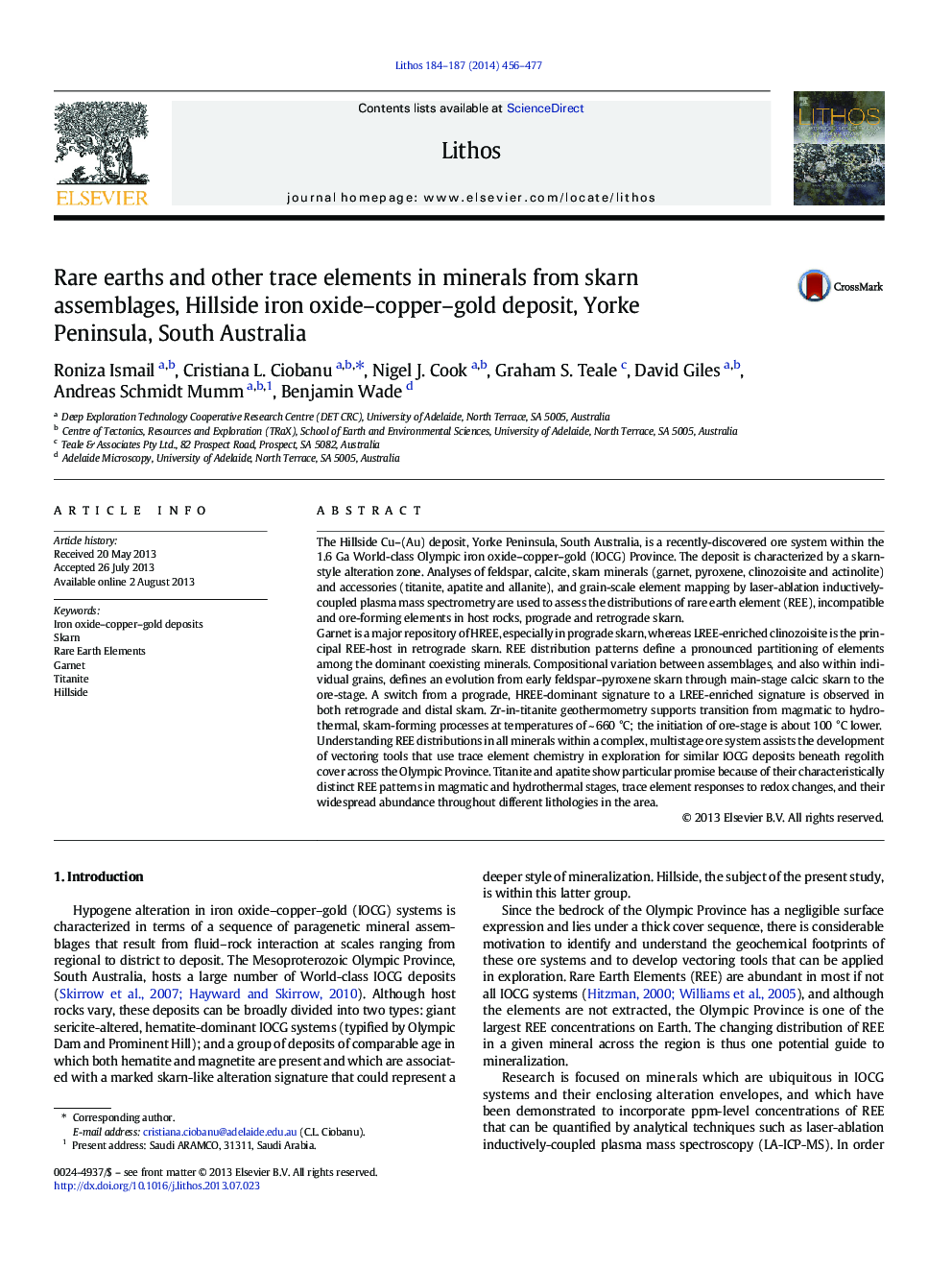| کد مقاله | کد نشریه | سال انتشار | مقاله انگلیسی | نسخه تمام متن |
|---|---|---|---|---|
| 4716143 | 1638683 | 2014 | 22 صفحه PDF | دانلود رایگان |
• Trace element signatures are mapped in skarn minerals at the Hillside IOCG deposit.
• REY patterns trace the magmatic- to metasomatic evolution of the system.
• REY patterns in titanite and apatite show promise as exploration vectors.
The Hillside Cu–(Au) deposit, Yorke Peninsula, South Australia, is a recently-discovered ore system within the 1.6 Ga World-class Olympic iron oxide–copper–gold (IOCG) Province. The deposit is characterized by a skarn-style alteration zone. Analyses of feldspar, calcite, skarn minerals (garnet, pyroxene, clinozoisite and actinolite) and accessories (titanite, apatite and allanite), and grain-scale element mapping by laser-ablation inductively-coupled plasma mass spectrometry are used to assess the distributions of rare earth element (REE), incompatible and ore-forming elements in host rocks, prograde and retrograde skarn.Garnet is a major repository of HREE, especially in prograde skarn, whereas LREE-enriched clinozoisite is the principal REE-host in retrograde skarn. REE distribution patterns define a pronounced partitioning of elements among the dominant coexisting minerals. Compositional variation between assemblages, and also within individual grains, defines an evolution from early feldspar–pyroxene skarn through main-stage calcic skarn to the ore-stage. A switch from a prograde, HREE-dominant signature to a LREE-enriched signature is observed in both retrograde and distal skarn. Zr-in-titanite geothermometry supports transition from magmatic to hydrothermal, skarn-forming processes at temperatures of ~ 660 °C; the initiation of ore-stage is about 100 °C lower.Understanding REE distributions in all minerals within a complex, multistage ore system assists the development of vectoring tools that use trace element chemistry in exploration for similar IOCG deposits beneath regolith cover across the Olympic Province. Titanite and apatite show particular promise because of their characteristically distinct REE patterns in magmatic and hydrothermal stages, trace element responses to redox changes, and their widespread abundance throughout different lithologies in the area.
Journal: Lithos - Volumes 184–187, January 2014, Pages 456–477
